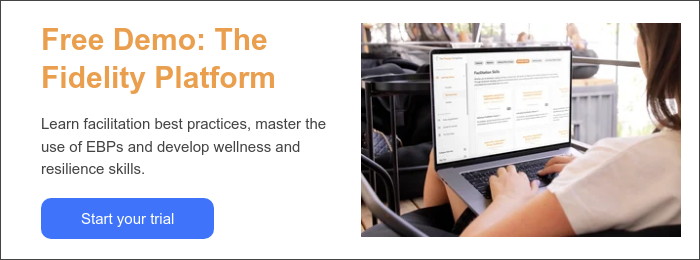Including quiet participants in group sessions

To facilitate a successful group and positive individual outcomes, it can help to look at how each participant is engaging within group dynamics. Group counseling sessions offer a valuable setting for learning and growth. They can also pose challenges, like engaging quiet participants.
Tips to engage quiet participants
Quiet participants may rarely speak up in group facilitation. They can be attentive but are often hesitant to share their own thoughts and experiences.
Below are 10 techniques that can help draw quiet participants into the group.
-
Establish group guidelines. Quiet participants have a lot to offer the group but need a safe space to open up. Creating group agreements can build the foundation for a respectful and effective environment.
-
Treat each participant as an individual. You may find it helpful to initiate a one-on-one conversation.Taking time to learn about the participant and their needs can help them feel more at ease.
-
Practice accurate empathy. Accurate empathy involves not making assumptions about where a participant is or should be, instead meeting them where they are.
-
Ask open-ended questions. Quiet individuals may stay silent when they don’t have the answers. Soliciting opinions and perspectives rather than right or wrong answers can help participants engage. You might also elicit feedback, like asking, “What thoughts or feelings do you have about this?”
-
Practice active listening. Active listening involves responding and reflecting on participants’ contributions, and retaining the information they share. Practice giving quiet participants time to respond and encouraging the rest of the group to do the same.
-
Encourage non-verbal participation. Activities beyond group discussion can also help involve silent or shy participants. Allowing written and drawn responses and including chalkboard or whiteboard activities are a few examples.
-
Use smaller groups. Introverted participants may be more likely to participate in smaller discussions. Consider breaking out the larger session into small groups.
-
Ease participants in. In a full group discussion, you might ask quiet participants for an answer to an easy question, helping them feel more comfortable offering a comment to the group. Casual icebreakers can also help shy participants get involved.
-
Avoid adding pressure. Never force an individual to share or read out loud if they aren’t ready. You might also consider whether challenges with literacy could be getting in the way of participating.
-
Provide positive reinforcement. When quiet participants do speak up, validate their contributions. Encouraging and reinforcing participants’ sharing can help build their confidence.
Different people have different comfort levels when it comes to speaking in group settings. The goal is building an environment where each member feels safe and supported to participate in their own way.

